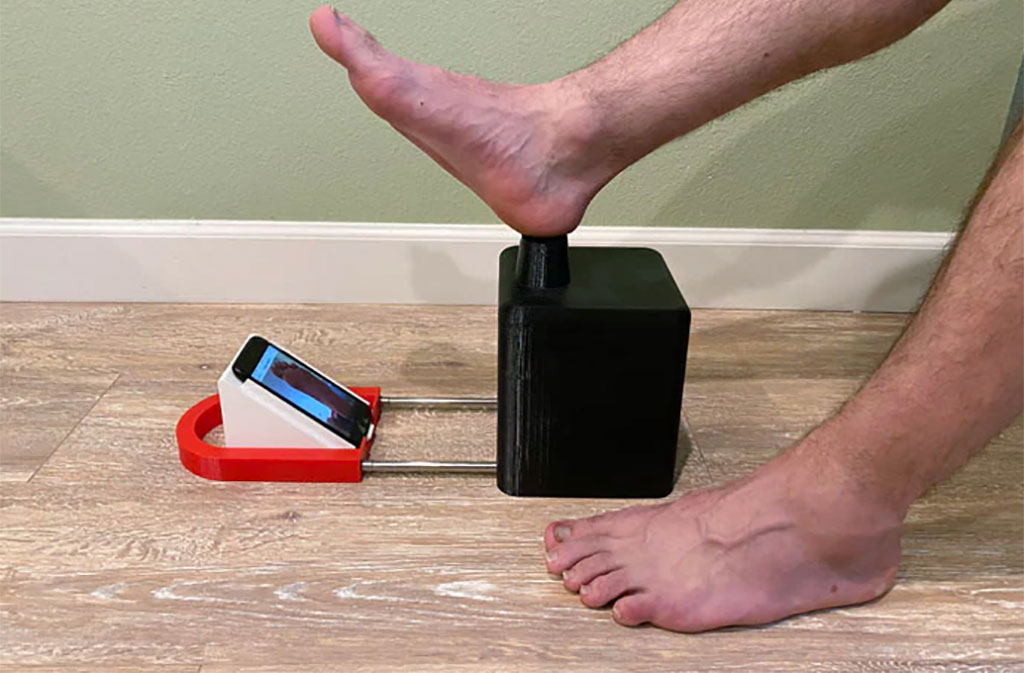Selfies' May Improve Remote Diabetic Foot Monitoring
By HospiMedica International staff writers
Posted on 23 Nov 2021
A simple 3D-printed device allows patients to take standardized photos of the entire plantar surface of their feet with a phone app, using voice commands.Posted on 23 Nov 2021
Developed at the University of Southern California (USC; Los Angeles, USA), the “Foot Selfie” device is a smartphone-based positioning device that enables patients to monitor diabetic foot ulcers (DFUs) without assistance and transmit the images to a remote server. The 3D system consists of a heel platform, a smartphone holder, and a base that connects the two via telescoping rods. The Foot Selfie smartphone app, for both iOS and Android, directs users to take voice-activated photos, view them, and upload them for review by healthcare providers, flagging concerns.

Image: The Foot Selfie System (Photo courtesy of Mark Swerdlow/ USC)
In a pilot study, 15 patients from a limb-salvage clinic were asked to image the plantar surface of their feet daily for six months and to evaluate the system by questionnaire at five time points. The results showed that the participants uploaded images on a median of 76% of eligible study days. In all, 12 active wounds and 39 pre-ulcerative lesions were monitored. Healing of seven wounds and reversal of 20 pre-ulcerative lesions were observed during the study period. The study was published on October 31, 2021, in Journal of Diabetes Science and Technology.
“Participants rated the system as useful, empowering, and preferable to their previous methods of foot screening. With minimal training, patients transmitted diagnostic-quality images from home on most days, allowing clinicians to review serial images,” said lead author and device developer Mark Swerdlow, MSc. “Further studies are needed to determine whether it can reduce morbidity of DFUs and/or the associated cost of care. Artificial intelligence integration could improve scalability.”
Diabetes patients often suffer from nerve and circulation problems in the feet, which reduce their perception of pain. The nerve pathways that ensure that weight is automatically transferred from one foot to the other during prolonged standing are disrupted, and as a result, diabetics do not notice that their toes, heels, or the balls of their feet are too heavily loaded. The foot receives no relief, and pressure sores, DFUs, and infections may go unnoticed. Serious cases may even lead to amputation.
Related Links:
University of Southern California














